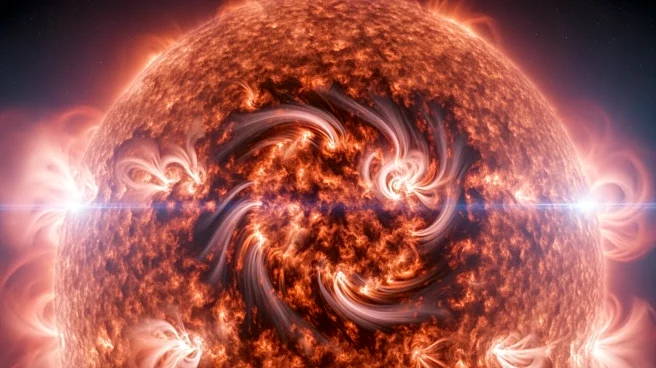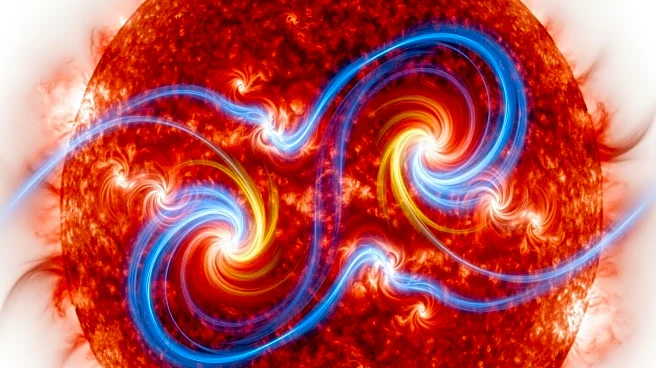What's Happening?
Researchers have discovered small-scale torsional Alfvén waves within the Sun's corona using the Daniel K. Inouye Solar Telescope in Hawaii. These magnetic waves, theorized since the 1940s, are believed
to play a crucial role in heating the Sun's outer atmosphere. The discovery was made possible by the telescope's Cryogenic Near Infrared Spectropolarimeter (Cryo-NIRSP), which can detect fine structures in the solar atmosphere. This breakthrough provides direct evidence of these waves, which may continuously supply energy to the Sun, explaining why the corona is much hotter than the Sun's surface.
Why It's Important?
Understanding Alfvén waves is significant for predicting space weather, as the solar wind carries magnetic disturbances that can affect GPS, satellites, and power grids on Earth. The discovery offers validation for theoretical models describing how wave turbulence powers the solar atmosphere. It also sheds light on 'magnetic switchbacks,' bursts of energy in the solar wind detected by NASA's Parker Solar Probe. This research could lead to improved forecasting of solar activity and its impacts on Earth.
What's Next?
The discovery is expected to spark further investigations into wave propagation and energy dissipation in the corona. The advanced capabilities of the Cryo-NIRSP instrument open new possibilities for studying wave physics in the solar atmosphere. Future research will likely focus on testing theoretical models against these direct observations, enhancing our understanding of solar dynamics and space weather prediction.
Beyond the Headlines
The research involved international collaboration, highlighting the global effort to understand solar phenomena. The ability to directly observe these waves allows scientists to refine models of solar activity, potentially leading to breakthroughs in how we understand and predict solar behavior.











